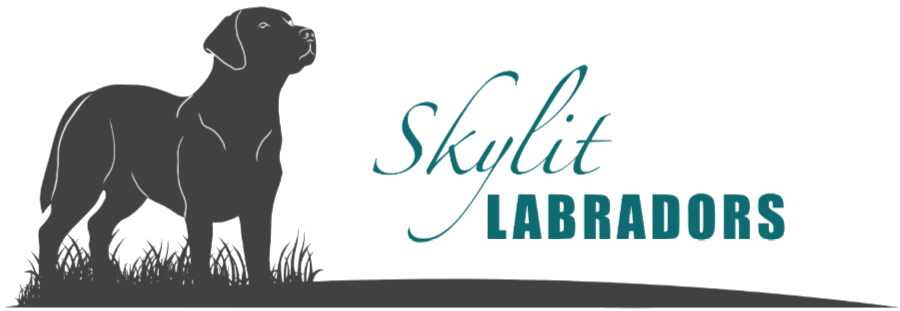Health Links
These are several genetic diseases that Labrador Retrievers are prone to developing. Many breeders do not take the time, make the effort or invest their money in testing for these diseases. I am a strong believer in genetic testing and have ensured that none of my Labs or their offspring will ever suffer from EIC, CNM, PRCD, DM, Skeletal Dysplasia, HNPK or Cystinuria.
Please note that the audio on some of these videos may lead you to believe these are funny or light-hearted issues. They certainly are not. These diseases are very serious, more and more prevalent, and unfortunately lead to a shortened life for Labradors.
Degenerative Myelopathy (DM)
Degenerative Myelopathy (DM) in Labrador Retrievers is a recessively inherited disease very similar to Lou Gehrigs disease in humans. Because it is a recessive disease, parents of the puppies can be completely normal and be carriers of the disease. The disease has a late-in-life onset and is often mistaken for Hip Dysplasia. Usually within 6-month to 2 years the dog is completely incapacitated and has no muscle control in its hind end. All Skylit Labradors are genetically tested to ensure that no puppies will ever have this disease!
Exercise Induced Collapse (EIC)
Exercise-induced collapse (EIC) is a disorder of increasing significance in Labrador Retrievers, especially those dogs used for hunting and field trials. EIC affected dogs have also been identified in Chesapeake Bay and curly-coated retrievers, as well as several other breeds. Dogs affected with EIC develop muscle weakness, incoordination and life-threatening collapse after just five to fifteen minutes of field exercise and cannot participate in many types of strenuous activities. Collapses are not just a “need for rest” but can lead to death.
Centronuclear Myopathy (CNM)
Centronuclear Myopathy in Labrador Retrievers is a recessively inherited muscular disease. This disease was previously known as Labrador muscular myopathy. The disease is characterized by early onset muscular problems such as awkward gait, fatigue, and difficulty eating. Affected puppies generally begin displaying these problems within a few months after birth.
Other Health Issues
Eyes -- http://www.labbies.com/eye.htm
Other Clearances -- http://www.woodhavenlabs.com/clearances.html
Genetic Testing -- https://www.pawprintgenetics.com/products/breeds/76/
Interesting article on the Hip Dysplasia gene -- http://idw-online.de/pages/de/news586117
Pennhip versus OFA methods of scoring comparison: http://siriusdog.com/subject-pennhip-vs-hip-extended-views/
Hip Dysplasia Study -- http://siriusdog.com/dysplasia-hip-dog-chd-ofa-pennhip-3
Benefits of testing for the Hip Dysplasia gene versus making decisions on breeding stock based on their individual hip scores -- http://onlinelibrary.wiley.com/doi/10.1111/jbg.12056/full
More about the Hip Dysplasia gene -- http://healthypets.mercola.com/sites/healthypets/archive/2015/07/08/canine-hip-dysplasia.aspx?e_cid=20150716Z3_WPNL_art_2&utm_source=wpnl&utm_medium=email&utm_content=art2&utm_campaign=20150716Z3&et_cid=DM79577&et_rid=1034474049
Resulting hip scores from breeding various hip scored dogs (chart)

